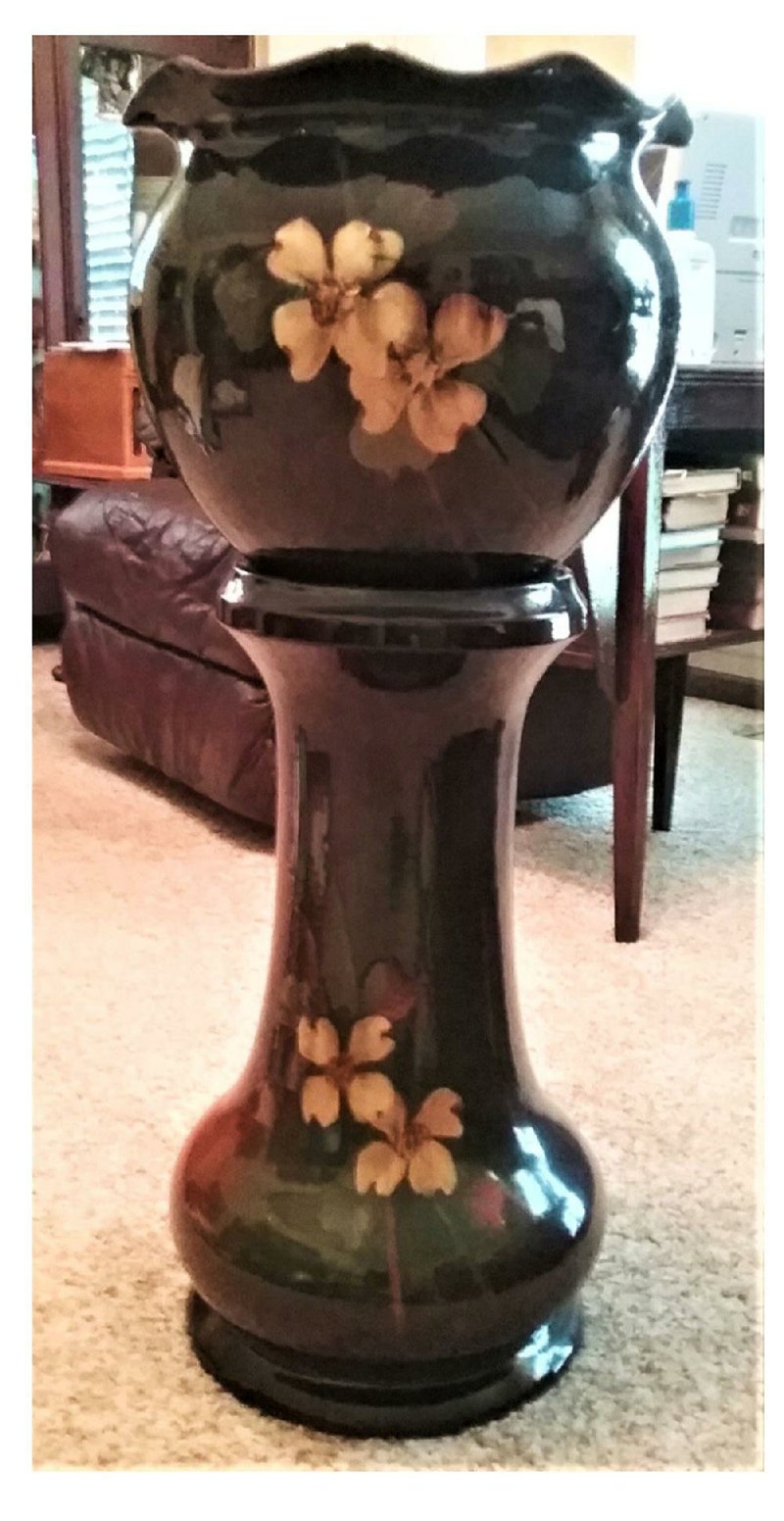DEAR HELAINE AND JOE: This jardiniere has been in my family for many years. My great grandmother (born 1858, died 1939) was a photographer. She had a studio in her home and used this piece in her photos. I have one of her pictures of my great-great-grandparents with this jardiniere in the background. They died in 1911 and 1921, respectively. The jardiniere is in excellent condition. Any information about it would be appreciated.
Thank you,
D.B.
DEAR D.B.: We need more pictures of the bottom so we could look for a mark, but the image that you sent only told us the piece was probably a product of an Ohio art pottery company. We are left with the question: Who exactly was the maker?
The possibilities are not endless, but they are numerous. It might have been Rookwood, Weller, Roseville, J.B. Owens, Lonhuda, Cambridge or J.W. McCoy. All used a brownish glaze with golden yellow or greenish overtones similar to the one on the jardiniere in today's question. They also used the under-the-glaze slip decorating technique, used to create the images of the dogwood blossoms. "Slip," incidentally, is nothing more than colored liquid clay used to "paint" designs under the glaze on ceramics.
The predominantly brown glaze that was used by so many Ohio art potteries of the late 19th and early 20th century was "discovered" in 1881 by Laura A. Fry, who, while working at Rookwood in Cincinnati, started using an atomizer to apply the glaze to the greenware body. This became Rookwood's "Standard Glaze" and it -- plus the underglaze "slip" decoration -- was copied by many companies in Zanesville, Roseville and Cambridge, Ohio.
The piece in today's question was not made at Rookwood. The quality is not there, and neither is the company's mark, which is almost never missing. Also, Rookwood's standard glaze tended to be a beautiful co-mingling of shades of brown, red and golden yellow (sometimes with a hint of green). In addition, we tend to dismiss Owens, Lonhuda and Cambridge as the maker. We feel the jardiniere and pedestal was made by Roseville, J.W. McCoy or Weller. All three companies were a little hit-and-miss about marking their wares, and their glazes were not as rich and varied as those on Rookwood pieces.
Roseville's brown glazed slip decorated wares were called "Rozane" and were first made about 1900. Weller called its line "Louwelsa," after Samuel A. Weller and his daughter Louise. This ware was based on wares made by William Long of the Lonhuda factory. Louwelsa was first made in 1895 and continued in production until 1918.
J.W. McCoy called its line of brown under glaze slip decorated wares Loy-Nel-Art after Nelson's three sons: Lloyd, Nelson and Arthur. This line is circa 1905/06 and with its dogwood design is a real frontrunner for what D.B.'s piece happens to be. If it is Loy-Nel-Art, the insurance value should be in the $350 to $450 range. If it turns out to be Weller (a close possibility in our book), the value would be slightly more in the $500 to $600 range.
Helaine Fendelman and Joe Rosson have written a number of books on antiques. Do you have an item you'd like to know more about? Contact them at Joe Rosson, 2504 Seymour Ave., Knoxville, TN 37917, or email them at treasures@knology.net. If you'd like your question to be considered for their column, please include a focused high-resolution photo of the subject with your inquiry.
HomeStyle on 05/18/2019
